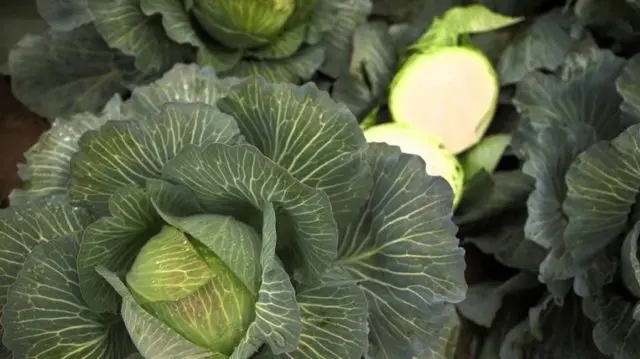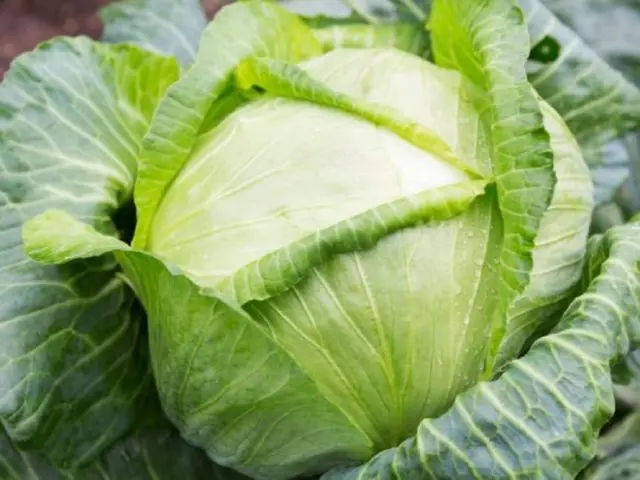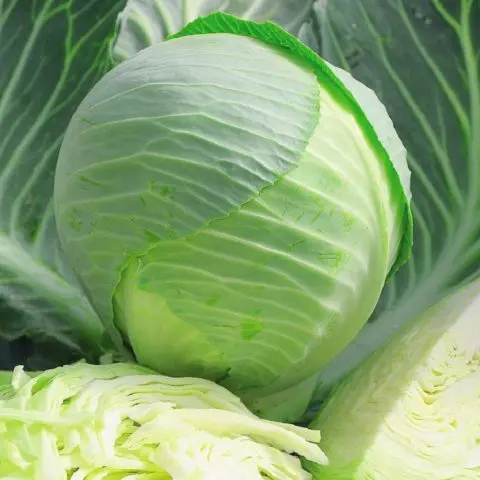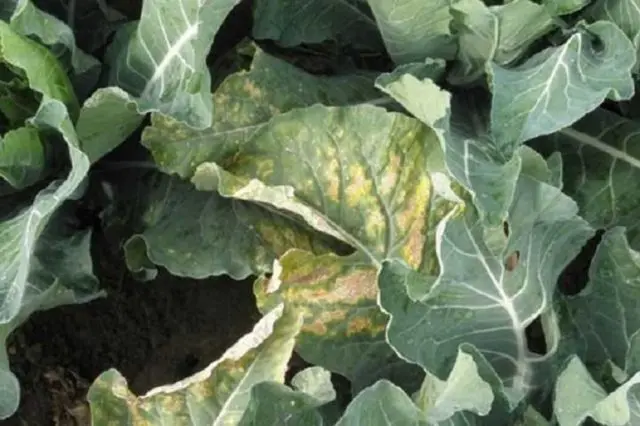Contents
Quilaton cabbage is a well-known and beloved white variety by gardeners. The popularity is based on the characteristics of the vegetable, its beneficial properties and a wide range of applications. To grow cabbage on the site yourself, you should familiarize yourself with the nuances of the agricultural technology of the variety.

The late-ripening variety is valued by vegetable growers for large heads and good keeping quality.
Description of the cabbage variety Quilaton
A hybrid was bred by Dutch breeders of Syngenta Seeds. The variety has been registered in the State Register since 2004. On the territory of the Federation, the seeds of cabbage Quilaton F1 are distributed by manufacturers Prestige, Gardens of Our Country, Partner, Gavrish. Recommended variety for cultivation in the southern regions and the Central region. It demonstrates good resistance to low temperatures, which is also evidenced by the main characteristics of the Quilaton cabbage variety.
The ripening period is late. The time from the moment of emergence of seedlings to full maturation is 130-140 days.
Head of cabbage is the main goal of vegetable growers. In Quilaton, it is round-flat, with a dense structure. The color of the head is green, the upper leaves are dark green, it remains throughout the entire storage period. The leaf rosette is sprawling. On the surface of the leaves there is a wax coating, quite intense and thick. On the cut, the color of the head is white or white-yellow.

To improve the taste and nutritional characteristics of cabbage Quilaton, you need to fulfill all the requirements of agricultural technology
The outer and inner stumps are very short. Variety Quilaton forms large heads of cabbage. The mass of one head is 3-4 kg.
Cabbage is renowned for its resistance to clubroot disease and internal punctate necrosis. This allows you to store heads of cabbage for a long time in the basement. The variety tolerates low temperatures well.
Pros and cons of cabbage Quilaton
Like any vegetable, a hybrid has its advantages and disadvantages. The list is easy to compile based on feedback from farmers who grow it on their plots.
Among the advantages of the variety are highlighted:
- good taste;
- wide range of applications;
- excellent keeping quality, allowing you to store the crop for a long time (7-8 months);
- immunity to cultural diseases;
- high yield.
Among the minuses of cabbage varieties are:
- reduced growth with a lack of lighting;
- exactingness to nutrition, soil composition and watering.
Productivity of cabbage Quilaton F1
This is another characteristic that makes Quilaton popular. From 1 sq. m planting area collect 10-11 heads with a good weight. If we take the average weight of one head of cabbage as 3 kg, then from 1 sq. m you can get up to 35 kg of late-ripening white cabbage.

Vegetable growers grow Quilaton due to the opportunity to get a good harvest from a small area
Planting and caring for cabbage Quilaton
In regions with a cool climate, a variety is planted in seedlings. This allows you to get a crop even under adverse conditions. In the south, two methods are used – direct sowing in the ground or growing seedlings. To grow healthy seedlings, you will need to follow several steps:
- Acquisition and preparation of planting material. If the purchased seeds are covered with a colored shell, then they do not need pre-planting treatment. Seeds without a shell will have to be soaked for 1 hour in a solution of potassium permanganate (1%). Then rinse with clean water and place in the refrigerator for a day for hardening.
- Preparation or purchase of soil mixture. You can use the soil for seedlings, which is sold in a specialized store. If it is possible to cook it yourself, then the Kilaton cabbage mixture is prepared from earth, peat, humus in equal parts. Be sure to add wood ash, then disinfect the mixture with the same potassium permanganate solution that was used to soak the seeds. Another option is to ignite the soil or spill it with boiling water.
- Timely sowing. The optimal time for seedlings is the beginning of April. If it is decided to sow the Quilaton variety immediately into the ground, then this should be done no earlier than May, when the soil warms up and stable heat is established.
- Preparation and filling of containers. The containers must be 8 cm deep or more. Disinfect the container with a solution of potassium permanganate, fill with soil mixture.
- Level the soil, make grooves no more than 2-3 cm deep, lay the seeds and cover with soil. Water immediately. Cover the containers with glass or film and leave in a warm place (+ 23 °C).
- After the emergence of shoots, transfer to a room with a temperature of + 15-17 ° C. Seedling care consists in timely watering. It is necessary to ensure that a crust does not appear on the surface of the earth, but seedlings should not be flooded either. After the formation of a green stem, it is required to feed the seedlings with a solution of mineral fertilizers.
2 days before disembarkation, top dressing should be repeated with a mixture of ammonium nitrate (3 g), potassium chloride (1 g), superphosphate (4 g).
When there are 5-6 leaves on the seedlings, they are transplanted into the ground according to the scheme 50 x 50 cm.

When planting seedlings, it is very important to maintain a planting pattern.
Seedlings deepen 1 leaf. Further plant care consists of:
- Watering. Cabbage should be irrigated with warm water. Cold water can cause bacterial or fungal infections to develop. When the head formation phase begins, abundant watering is required. 30-40 days before harvest, the frequency of watering is reduced by half. It is important to stop it 2 weeks before the due date so that the variety does not lose its storage capacity.
- top dressing. The first time cabbage needs additional nutrition 10 days after transplanting into open ground. The second dressing of the variety is carried out 3 weeks after the first. Both times make nitrogen compounds. When they begin to form heads, a phosphorus-potassium mixture is needed.
- Weeding, loosening and hilling. Weeding is done all the time. Weeds have a very negative effect on the growth and development of cabbage. It is best to loosen the soil after watering or rain. Hilling for Quilaton is not considered a mandatory procedure due to the short leg. But once a season, vegetable growers recommend carrying out the procedure.
- Harvest. The best time is after the first frost. You need to monitor the air temperature at night. As soon as it drops to a value of -2 ° C, you should immediately remove the heads and put them in storage in the cellar.
It is recommended to store cabbage of the Quilaton variety at a temperature of 0-2 ° C. If this condition is maintained, then the heads do not deteriorate within 7-8 months.
Diseases and pests
The description contains information about the high resistance of the variety to necrosis, fusarium and keel. However, there are diseases that can affect plants:
- white rust;

Thorough cleaning of plant residues from the site can prevent the spread of rust.
- bacteriosis (mucous and vascular);

A similar bacterial disease manifests itself in violations of agricultural technology.
- peronosporosis.

So that the variety does not fall ill with downy mildew, you need to carefully choose the seed supplier
Rust is removed with the drug “Ridomil”, peronosporosis – with Bordeaux liquid. But bacteriosis is not treated. Plants will have to be destroyed and the soil disinfected.
Disease prevention is:
- thorough autumn cleaning of the site;
- mandatory disinfection of soil and planting material;
- exact observance of agricultural technology;
- implementation of recommendations on crop rotation;
- fungicide treatments.
Among the list of pests that are dangerous for the Quilaton F1 variety, it is necessary to highlight the cabbage fly, greenhouse whitefly, aphids, cruciferous flea.
Prevention consists in dusting with wood ash or tobacco dust. When pests appear, insecticide treatments are needed.
Application
The hybrid variety is considered universal. Use it fresh, pickled or salted. From the heads of Quilaton, salads, borscht and main dishes are obtained with excellent taste.

Late-ripening varieties are valued in cooking for their rich nutritional composition and excellent taste.
Conclusion
Quilaton cabbage is a very tasty and productive late-ripening variety. By following the manufacturer’s recommendations for growing a hybrid, any summer resident will receive a high yield of a healthy vegetable. It is suitable for cultivation in industrial volumes.












